Toast vs PAYSPOS: Which POS System Is Better for Quick Service Restaurants in 2025?

Last week, my friend Rachel called me panicked. She’s all set to open her new Korean quick-service restaurant (QSR) “Seoul Bite,” a cozy little spot serving bulgogi rice bowls, cheesy tteokbokki, and crispy Korean fried chicken.
Everything was ready. Her chef was hired. The entire kitchen smelled of sesame oil and gochujang. Even the logo design was done.
But she had one last problem.
“I need a POS system today,” she said. “I’ve done my research and finalized Toast and PAYSPOS, but what if I choose wrong?”
Well, her fear was very well justified. A POS system is the engine of a QSR. If it hangs, your queue builds up. And if it crashes, your peak-hour sales vanish. If it’s overpriced, you won’t be able to enjoy your profits.
So, we sat together to compare Toast vs PaysPOS not just on flashy features, but on speed, pricing, setup, customer support, and day-to-day usability.
Let’s walk through the key factors we analyzed before making the final call. If you’re comparing Toast and PAYSPOS in 2025, use this guide to choose the best POS with confidence.
Toast vs PAYSPOS: Which POS System Fits Your Business Better?
Let’s start with a simple overview of both Toast and PAYS POS.
Toast POS is a well-established, cloud-based restaurant management platform that’s been around in the food service industry since 2013. Toast offers payment processing, order management, and reporting tools. These tools are all bundled into an ecosystem that’s primarily designed for the full-service and casual dining industry. Its biggest strength lies in its reputation and integrations.
But many restaurant owners in 2025 are worried about Toast’s pricing, especially the high transaction fees that range from 2.49% to 3.69% per swipe.
PAYS POS, on the other hand, is made for quick-service restaurants and busy food service businesses. Its ‘profit-first POS’ approach uses a 0% fee dual-pricing model, so restaurants keep all of their earnings from each transaction.
Additionally, PAYS POS focuses on simplicity, same-day payouts, and free hardware. These features make it particularly appealing for growing QSRs that want enterprise-level tools without the cost burden.
Which POS Gives You More Value?
To understand the difference clearly, here’s a direct feature-by-feature comparison from a QSR owner’s point of view:
Feature | Toast | PAYS POS |
Processing Fees | 2.49%–3.69% per transaction | 0% Processing Fee (Dual Pricing Model) |
Hardware | Proprietary, paid devices | Free, processor-agnostic devices |
Contract Terms | Long-term contract | Month-to-month flexibility |
Menu Setup | Manual configuration | Free done-for-you onboarding |
Support | Standard support | 24/7 live support + dedicated account manager |
Integrations | Moderate | Custom API + processor flexibility |
Payout Time | 1–2 business days | Same-day payouts |
Marketing Tools | Limited | Built-in loyalty & marketing suite |
Verdict: PAYS POS offers flexibility, transparent pricing, and higher long-term ROI without locking restaurants into restrictive contracts.
How Fees Affect QSR Profitability?
Let’s visualize how much processing fees truly cost over time.
A QSR earning $50,000 per month in card transactions with Toast (at an average 3% fee) pays around $1,500 every month or $18,000 per year just in transaction fees.
In comparison, with PAYS POS, you keep that money in your pocket. Those savings can be reinvested into staff, digital marketing, or kitchen upgrades.
Hear’s a quick comparison.
Monthly Card Sales | Toast (3% Fee) | PAYS POS (0% Fee) | Annual Savings |
$25,000 | $750 | $0 | $9,000 |
$50,000 | $1,500 | $0 | $18,000 |
$75,000 | $2,250 | $0 | $27,000 |
$100,000 | $3,000 | $0 | $36,000 |
Learn more: How PAYS POS Outperforms Square in Mobile POS Capabilities
Which POS Delivers a Faster Setup and Smoother Experience for QSRs?
While Toast’s hardware ecosystem is sleek, it’s also locked. That means it only works within Toast’s environment. Restaurants switching away from Toast often find themselves unable to reuse their purchased devices.
Meanwhile, the PAYS point of sale has the opposite approach: free, open, and flexible. Merchants receive modern devices (Android-based or handheld) that can connect with multiple processors and POS networks.
This makes system upgrades, replacements, and integrations simple without additional costs.
Also read: Why Every Quick-Service Restaurant Needs PAYS POS for Drive-Thru Management
Which POS Delivers a Faster Setup and Smoother Experience for QSRs?
While Toast’s hardware ecosystem is sleek, it’s also locked. That means it only works within Toast’s environment. Restaurants switching away from Toast often find themselves unable to reuse their purchased devices.
Meanwhile, the PAYS point of sale has the opposite approach: free, open, and flexible. Merchants receive modern devices (Android-based or handheld) that can connect with multiple processors and POS networks.
This makes upgrades, replacements, and integrations simple without additional costs.
Also read: Why Every Quick-Service Restaurant Needs PAYS POS for Drive-Thru Management
Why Transparency Is Important for QSR Success?
If there’s one thing customers appreciate more than a restaurant’s amazing food, it is the owner’s honesty. In a quick-service restaurant, people usually expect things to be fast, smooth, and clear, such as how their food is served and how much they’re being charged.
That’s where transparency really matters. When prices are clear and customers know exactly what they’re paying, it builds trust, the kind that keeps them coming back after lunch rushes and weekend take-outs.
PAYS POS was built around that idea. Its dual-pricing setup follows every rule from Visa, Mastercard, and state regulators, so there’s never any guesswork or fine print. PAYS POS’s system automatically shows both the cash price and the card price on the screen and the receipt.
For a restaurant owner, that kind of clarity is extremely important to build trust and get a clear picture of their finances. You don’t have to worry about hidden fees or customers questioning charges. You know your business is following the rules, and your guests know they’re being treated with honesty.

Toast plays by the book, too, but it doesn’t give owners the same level of control. You’re locked into their processing network and stuck paying fees that you can’t adjust or explain to your customers. It works, but it doesn’t feel as open as PAYS POS does.
PAYS POS gives you the freedom to run your restaurant your way, clearly, confidently, and without confusion. In a business built on quick service and happy customers, that transparency can help you a long way.
Which POS System should you choose for your restaurant?
Nowadays, running a successful restaurant is about survival through smart decisions. QSR owners are fighting battles on multiple fronts, such as rising food costs, unpredictable footfall, and constant pressure to move orders faster. And sometimes, the technology that’s supposed to help ends up becoming part of the problem.
That’s exactly what’s happening with many traditional POS systems like Toast. They’ve built their reputation over the years, and they do a lot of things well. But for fast casual QSRs, the cracks are showing. Every time a customer swipes a card, a small percentage disappears in fees. It doesn’t sound like much at first… until you realize you’re losing thousands every year.
That’s why PaysPOS feels refreshing. It’s made for today’s QSR reality where margins are tight, staff changes often, and speed is everything. With 0% processing fees, same-day payouts, and free setup, it gives back something most systems quietly take away: control.
With PAYSPOS, you’re not tied down by contracts. You don’t have to wait two days for your own money. And when you need help, there’s a real person, not a chatbot, who picks up the phone.
So who wins in 2025?
Toast is familiar. PaysPOS is forward-thinking.
Toast helps you run a restaurant. PaysPOS helps you grow one.
And for most QSR owners who are done watching fees eat into their hard-earned revenue, that difference means everything.
End Note
At the end of the day, the best POS system isn’t the one with the most features; it’s the one that actually helps your restaurant grow.
Toast is a solid, established name with years of experience behind it. It’s great for full-service setups or restaurants that can absorb higher fees in exchange for an all-in-one ecosystem. But for fast-paced Quick Service Restaurants, where every second and every dollar matters, those fees start to sting.
That’s where PAYS POS really shines. It’s built for modern QSR owners who want control over their costs, their cash flow, and their customer experience. With 0% processing fees, same-day payouts, and free hardware, it doesn’t just process payments; it protects your profits.
Choosing the right POS can change how you run your entire business. And if your goal is to serve faster, earn smarter, and keep more of what you make, PAYS POS isn’t just a good option, it’s the obvious one.
So before you sign another long-term contract or lose another month’s worth of fees, take a closer look. You’ve worked hard for every dollar; it’s time your POS started working just as hard for you.
Ready to see how much you can save with 0% processing fees?
Get your free demo from PAYS POS today →
FAQs
PAYS POS uses a compliant dual-pricing model that passes credit card costs to customers transparently, keeping your profits intact.
Yes. The onboarding team at PAYS POS handles hardware setup, menu migration, and data transfer for free
Yes, Toast remains a strong system, but its higher transaction costs make it less ideal for QSRs focused on maximizing profit margins.
PAYS POS offers 24/7 live support with a dedicated account manager for every merchant.
Yes. It supports multiple processors, APIs, and third-party integrations for smooth operations.
Disclaimer: This article is an unbiased and informative comparison between PaysPOS and Toast. It is not intended to criticize, defame, or harm the reputation of Toast or any other brand mentioned. |



